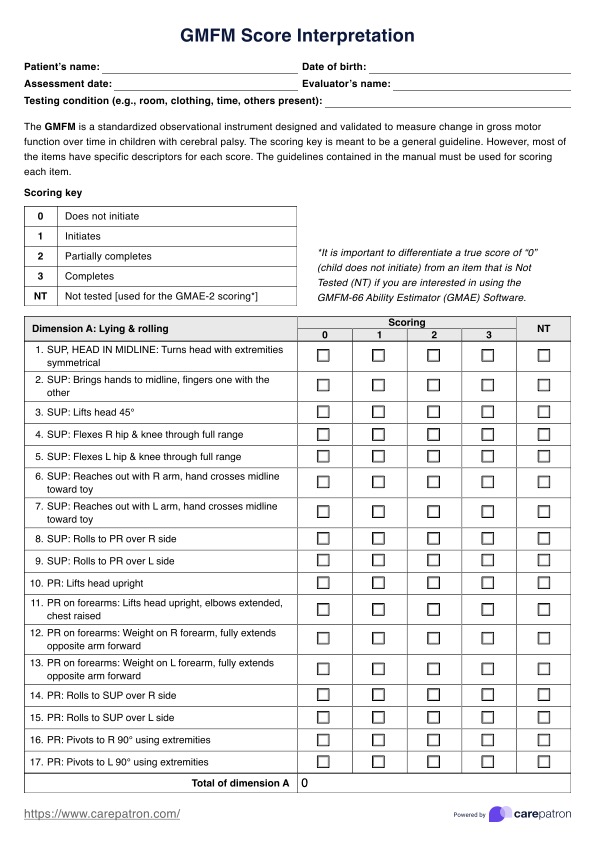While the GMFM score provides insights into gross motor function, it may not predict future gross motor function curves and abilities. However, improvements in GMFM scores often correlate with enhanced functional skills and can guide therapy goals and interventions for ongoing progress.

GMFM Score Interpretation
Accurately assess gross motor function using our GMFM Score template, ideal for assessing children with cerebral palsy. Try it on the Carepatron app today.
GMFM Score Interpretation Template
Commonly asked questions
Positive changes or increases in the GMFM score indicate improvements in gross motor function. This suggests that interventions or therapies positively impact the child's motor skills and overall functional abilities.
The GMFCS (Gross Motor Function Classification System) categorizes children with cerebral palsy based on functional mobility levels (GMFCS levels I–V), while GMFM-66 quantitatively measures and tracks changes in specific gross motor skills over time.
EHR and practice management software
Get started for free
*No credit card required
Free
$0/usd
Unlimited clients
Telehealth
1GB of storage
Client portal text
Automated billing and online payments











